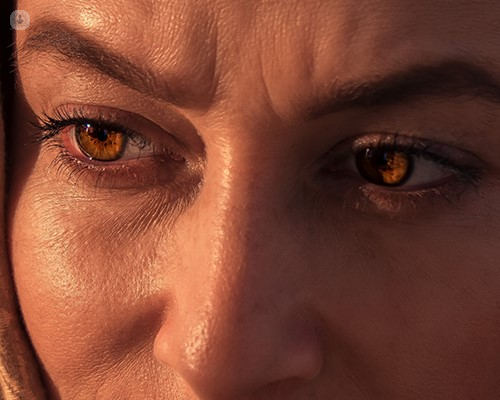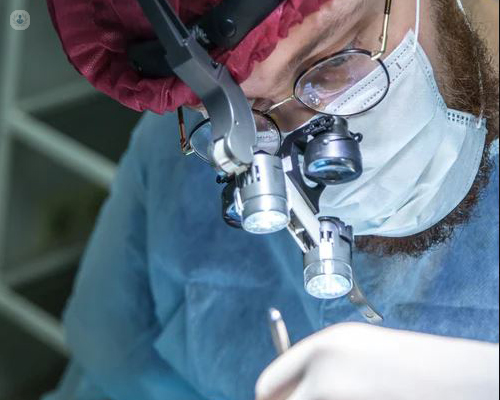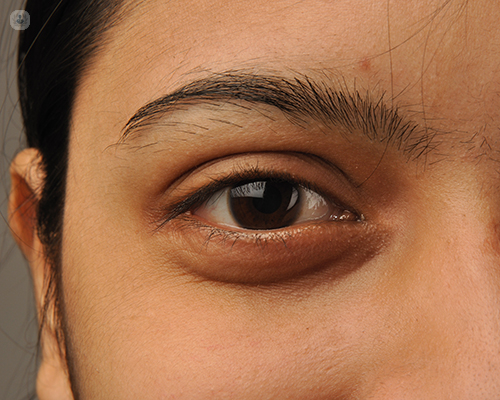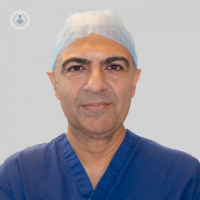Is MIGS with the Glaukos iStent® safe and effective?
Written by:MIGS (minimally invasive glaucoma surgery) using a micro iStent is one of the numerous options available for glaucoma treatment. It’s safe, has a high success rate and has been demonstrated to have long-lasting results. Mr Sundeep Kheterpal has been using the Glaukos iStent® for over six years and has been trained by Glaukos in its implantation procedure. He explains how this tiny device creates such life-changing results for patients and their vision.

What is the Glaukos iStent?
The Glaukos iStent® is one of the new micro-incision implants used to reduce eye pressure in patients with glaucoma. It’s made of titanium and is inserted into the front of the eye via a small incision that’s made on the side of the eye. It looks like a plug but it is actually a small tube. At present, I am one of the very few surgeons in the Thames Valley with experience in the procedure and who regularly performs it, having been trained by Glaukos, the company who created it.
Is there more than one type of micro-incision implant?
Several micro-incision implants are available but some of the earlier ones have been discontinued or have become less popular. The Glaukos iStent, however, has experienced a good track record for several years in terms of safety and efficacy. This is why I continue to use Glaukos iStent when performing minimally invasive glaucoma surgery (MIGS). It has also become very popular in the last couple of years, particularly since the micro-incision glaucoma study (MIGS) in America, in which it had positive outcomes.
How small is the iStent?
The Glaukos iStent is about 23 millimetres in width and 36 millimetres in length.
Who can benefit from an iStent?
Micro-incision implants are used particularly in patients with glaucoma who also need surgery for cataracts and in patients who have already had cataract surgery. We try and avoid it in patients who don’t have a cataract because they have a clear, natural lens and the incision made during MIGS can promote the development of a cataract.
Another reason is that as we’re making an incision into the eye, there’s the usual surgical risk of infection, inflammation and bleeding, which we want to try and avoid. However, if we implant the iStent during a cataract procedure, there is very little additional risk. The iStent is used to reduce eye pressure in patients who have glaucoma or high eye pressure. It can also be used in patients with slightly less pressure in the eye that can’t be controlled with drops. To implant the iStent in a patient, the drainage angles of their eye must be open. If drainage is closed, the iStent can’t be used.
An iStent generally works very well. It lowers the eye pressure and works as an alternative to glaucoma eye drops and selective laser trabeculoplasty (SLT), which often needs repeated every three to five years. What’s more, an iStent is safer than doing full-thickness surgery i.e. trabeculectomy.
How is it implanted into the eye?
The iStent is injected into the front of the eye via a small incision on the side of the eye. When implanted during a cataract procedure, the iStent will be injected at the end of the cataract operation. These days, we usually inject two stents per eye and these are injected into the eye at the same time.
You can watch a video of an iStent implantation procedure on the Glaukos website.
What is the success rate?
The procedure is very successful and eye pressure drops in over ninety per cent of patients.

Are there risks?
There is a very small risk of bleeding during the procedure, but this is mild and does not affect the outcome. Occasionally, micro stents can become blocked or fall out but these scenarios don’t cause harm and this is why we now insert two iStents in one injection.
How long do iStents last?
We don’t know yet as iStents are relatively new. Nevertheless, the results are quite promising. They are made of titanium, so they are very long-lasting and will not disintegrate.
If iStent isn't an option for glaucoma treatment, what are the alternatives?
If for any reason a patient isn’t eligible for iStent, they may be offered selective laser trabeculoplasty (SLT) or full-thickness glaucoma surgery (trabeculectomy).
How often should an iStent be checked?
We check the eye regularly after the procedure. The first follow up will take place within the first month after surgery followed by routine glaucoma checks every four to six months.
Are there typical “dos and don’ts” after MIGS?
The precautions patients need to take after having a micro stent inserted are the same as those advised after cataracts surgery:
- avoid rubbing your treated eye
- don’t wear makeup for ten days
- don’t go swimming for four weeks
Can iStents be removed?
There is not usually any need for an iStent to be removed (even if it stops working or becomes dislodged). It’s quite harmless in the eye and doesn’t react to anything within it. They’re safe inside the eye.
Take a look at Mr Kheterpal’s Top Doctors profile to schedule a consultation and learn more about how he can help you care for your eye health.



